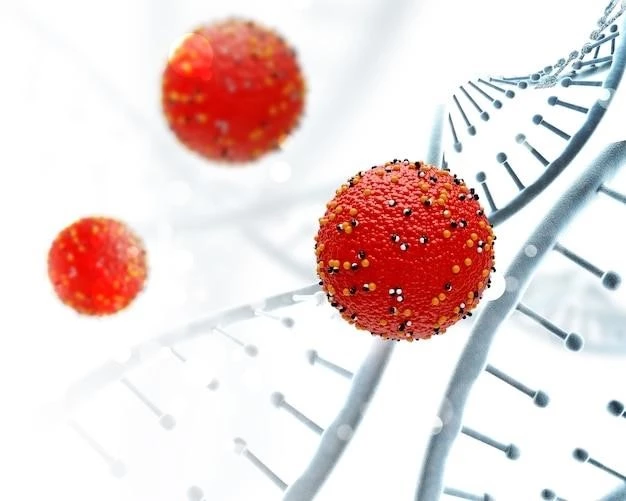Disease ─ Hemoglobin SC Disease
Conclusion
Introduction
Hemoglobin SC Disease is a genetic disorder that affects the structure of hemoglobin in red blood cells. It is a type of sickle cell disease, resulting from inheriting one sickle cell gene and one abnormal hemoglobin C gene. This combination leads to the production of abnormal hemoglobin molecules, causing red blood cells to become rigid and form a crescent or ″sickle″ shape.
Individuals with Hemoglobin SC Disease may experience episodes of pain, anemia, and other complications due to the altered shape of their red blood cells. Understanding the genetic basis, symptoms, and available treatments for this disorder is crucial in managing the condition and improving the quality of life for those affected.
This article aims to provide a comprehensive overview of Hemoglobin SC Disease, including its genetic origins, symptomatology, diagnosis, treatment options, and strategies for pain crisis management. By increasing awareness and knowledge about this disorder, individuals and healthcare providers can work together to enhance patient care and outcomes.
Understanding Hemoglobin and Red Blood Cells
Hemoglobin is a protein in red blood cells responsible for carrying oxygen throughout the body. In individuals with Hemoglobin SC Disease, the structure of hemoglobin is altered due to a genetic mutation. The combination of sickle cell gene and abnormal hemoglobin C gene leads to the formation of abnormal hemoglobin molecules.
Normal red blood cells are flexible and round, allowing them to move easily through blood vessels. However, in Hemoglobin SC Disease, the abnormal hemoglobin causes red blood cells to become rigid and take on a sickle shape. These sickle cells can get stuck in blood vessels, impeding blood flow and oxygen delivery to tissues and organs.
The altered red blood cells are more prone to breaking down prematurely, leading to anemia. The sickle-shaped cells also have a shorter lifespan than normal red blood cells, further exacerbating anemia. The reduced oxygen-carrying capacity of the blood can result in fatigue, weakness, and other symptoms associated with anemia.
Understanding the impact of abnormal hemoglobin on red blood cells is crucial in recognizing the complications that can arise in individuals with Hemoglobin SC Disease. By elucidating the connection between hemoglobin, red blood cells, and oxygen transport, healthcare providers can devise targeted interventions to manage the symptoms and improve the overall health of patients with this genetic disorder.

Genetic Basis of Hemoglobin SC Disease
Hemoglobin SC Disease is caused by a specific genetic mutation that affects the hemoglobin protein in red blood cells. Individuals with this disease inherit one sickle cell gene from one parent and one abnormal hemoglobin C gene from the other parent. The combination of these genes results in the production of abnormal hemoglobin SC molecules.
The sickle cell gene causes the production of abnormal hemoglobin S, while the abnormal hemoglobin C gene leads to the production of hemoglobin C. When these two abnormal hemoglobin molecules combine, they form hemoglobin SC. This variant of hemoglobin is less soluble than normal hemoglobin, leading to its tendency to form insoluble fibers when oxygen levels are low.
The formation of these fibers distorts the red blood cells into a sickle shape, compromising their flexibility and ability to flow smoothly through blood vessels. As a result, individuals with Hemoglobin SC Disease are susceptible to vaso-occlusive crises, where sickle cells block blood flow, leading to tissue damage and pain.
Understanding the genetic basis of Hemoglobin SC Disease is essential for diagnosis and management strategies. By recognizing the specific mutations that underlie this disorder, healthcare providers can offer appropriate genetic counseling, personalized treatment plans, and targeted interventions to address the unique needs of individuals with this genetic blood disorder.
Symptoms and Complications
Individuals with Hemoglobin SC Disease may experience a range of symptoms and complications due to the abnormal shape and functioning of their red blood cells. Common symptoms include fatigue, weakness, shortness of breath, and jaundice resulting from anemia. The abnormal hemoglobin can lead to vaso-occlusive crises, where sickle cells block blood vessels, causing severe pain and organ damage.
Vaso-occlusive crises can result in acute complications such as acute chest syndrome, where sickle cells obstruct blood flow in the lungs, leading to chest pain, cough, and difficulty breathing. Sickle cells can also block blood flow to the brain, causing strokes or other neurological issues. Additionally, the spleen may become enlarged due to increased blood cell destruction and trapping of sickle cells.
Chronic complications of Hemoglobin SC Disease include delayed growth and development in children, leg ulcers, gallstones, and priapism (painful, prolonged erections in males). Over time, organ damage from repeated vaso-occlusive episodes can affect the kidneys, liver, and lungs, impacting overall health and quality of life.
Recognizing the diverse array of symptoms and potential complications associated with Hemoglobin SC Disease is crucial for timely intervention and management. Healthcare providers and individuals with this genetic disorder must work together to monitor symptoms, address complications promptly, and implement strategies to prevent crises and minimize long-term impact on health.
Diagnosis and Treatment
Diagnosing Hemoglobin SC Disease involves a combination of laboratory tests, genetic testing, and clinical evaluation. Blood tests can reveal the presence of abnormal hemoglobin molecules and assess red blood cell counts. Hemoglobin electrophoresis is a common diagnostic tool that helps identify the specific types of hemoglobin present in the blood.
Genetic testing can confirm the presence of the hemoglobin S and C genes responsible for Hemoglobin SC Disease. Clinical evaluation may involve assessing symptoms, complications, and organ function to create a comprehensive picture of the individual’s health status.
Once diagnosed, the treatment of Hemoglobin SC Disease aims to manage symptoms, prevent complications, and improve quality of life. This may involve medications such as hydroxyurea, which can help increase the production of fetal hemoglobin and reduce the frequency of vaso-occlusive crises.
In cases of severe anemia or vaso-occlusive crises, blood transfusions may be necessary to increase oxygen delivery and replace damaged red blood cells. Regular monitoring of organ function, nutritional support, and vaccination against infections are also essential components of treatment for individuals with Hemoglobin SC Disease.
Collaboration between healthcare providers, hematologists, genetic counselors, and individuals with Hemoglobin SC Disease is vital in developing personalized treatment plans and ensuring ongoing care and support. By addressing the genetic basis of the disease and implementing targeted therapies, it is possible to improve outcomes and enhance the overall well-being of those living with this genetic blood disorder;
Pain Crisis Management
Pain crises are a common and distressing complication of Hemoglobin SC Disease, characterized by sudden and severe pain due to blocked blood vessels by sickle cells. Managing pain crises involves a multifaceted approach to alleviate discomfort, prevent complications, and promote recovery.
During a pain crisis, it is crucial for individuals with Hemoglobin SC Disease to seek immediate medical attention. Pain medications, such as nonsteroidal anti-inflammatory drugs (NSAIDs), opioids, and intravenous fluids, may be prescribed to help relieve pain and reduce inflammation. Heating pads, relaxation techniques, and distraction methods can also provide symptomatic relief.
Hydroxyurea, a medication commonly used to treat sickle cell disease, may help reduce the frequency and severity of pain crises by increasing the production of fetal hemoglobin. This can lead to fewer sickle cells in circulation, reducing the likelihood of blood vessel blockages and subsequent pain episodes.
In cases of severe or recurrent pain crises, hospitalization may be necessary for closer monitoring, intravenous pain management, and supportive care. Continuous communication with healthcare providers, pain management specialists, and hematologists is essential to ensure individualized care and timely intervention during pain crises.
Additionally, lifestyle modifications such as staying hydrated, avoiding extreme temperatures, getting regular exercise, and managing stress can help reduce the frequency of pain crises and improve overall well-being for individuals with Hemoglobin SC Disease. By implementing a comprehensive pain management plan and adopting healthy behaviors, individuals can better cope with the challenges associated with this genetic blood disorder.
Prevention and Long-Term Outlook
Preventing complications and improving the long-term outlook for individuals with Hemoglobin SC Disease involves a combination of medical interventions, lifestyle modifications, and ongoing monitoring. Regular medical check-ups, including blood tests, imaging studies, and organ function assessments, are essential for early detection of potential issues.
Vaccinations against infections such as pneumococcal disease and influenza are crucial for individuals with Hemoglobin SC Disease, as they are at increased risk of complications from infections due to their weakened immune system. Maintaining a healthy lifestyle, including a balanced diet, regular exercise, and adequate hydration, can help support overall well-being and reduce the risk of complications.
Education and awareness about Hemoglobin SC Disease among individuals, families, and healthcare providers are vital for proactive management and prevention of crises. Understanding the signs and symptoms of complications, such as pain crises and acute chest syndrome, can empower individuals to seek timely medical attention and prevent worsening of their condition.
The long-term outlook for individuals with Hemoglobin SC Disease varies depending on the severity of symptoms, presence of complications, and access to appropriate care. With advancements in treatment options, including hydroxyurea therapy, blood transfusions, and pain management strategies, many individuals with this genetic blood disorder can lead fulfilling lives with proper management and support.
By focusing on preventive measures, regular monitoring, and comprehensive care, individuals with Hemoglobin SC Disease can optimize their health outcomes, reduce the frequency of complications, and enhance their quality of life. Collaborative efforts between healthcare providers, support networks, and individuals themselves are key in achieving long-term wellness and managing the challenges associated with this genetic condition.
In conclusion, Hemoglobin SC Disease is a genetic disorder characterized by abnormal hemoglobin molecules that lead to the formation of sickle-shaped red blood cells. This condition can result in a myriad of symptoms and complications, including anemia, pain crises, organ damage, and neurological issues.
Diagnosis and treatment of Hemoglobin SC Disease involve a multidisciplinary approach that includes genetic testing, symptom management, and preventive measures to reduce complications. Medications such as hydroxyurea, blood transfusions, and pain management strategies play a crucial role in managing the symptoms and improving quality of life for individuals with this disorder.
Pain crisis management is a key aspect of care for individuals with Hemoglobin SC Disease, requiring prompt medical attention, pain relief medications, and lifestyle modifications to mitigate the impact of vaso-occlusive episodes. By addressing pain crises effectively, individuals can experience better symptom control and enhanced well-being.
Preventive measures, vaccination protocols, and regular monitoring are essential for preventing complications and optimizing long-term health outcomes for individuals with Hemoglobin SC Disease. Education, awareness, and collaboration among healthcare providers and individuals are vital in managing this genetic blood disorder and improving overall quality of life.
With ongoing research, advances in treatments, and comprehensive care approaches, there is hope for individuals with Hemoglobin SC Disease to lead fulfilling lives and navigate the challenges associated with this genetic condition effectively. By promoting awareness, providing support, and implementing personalized treatment plans, the outlook for individuals with Hemoglobin SC Disease can be improved, enhancing their quality of life and well-being.
